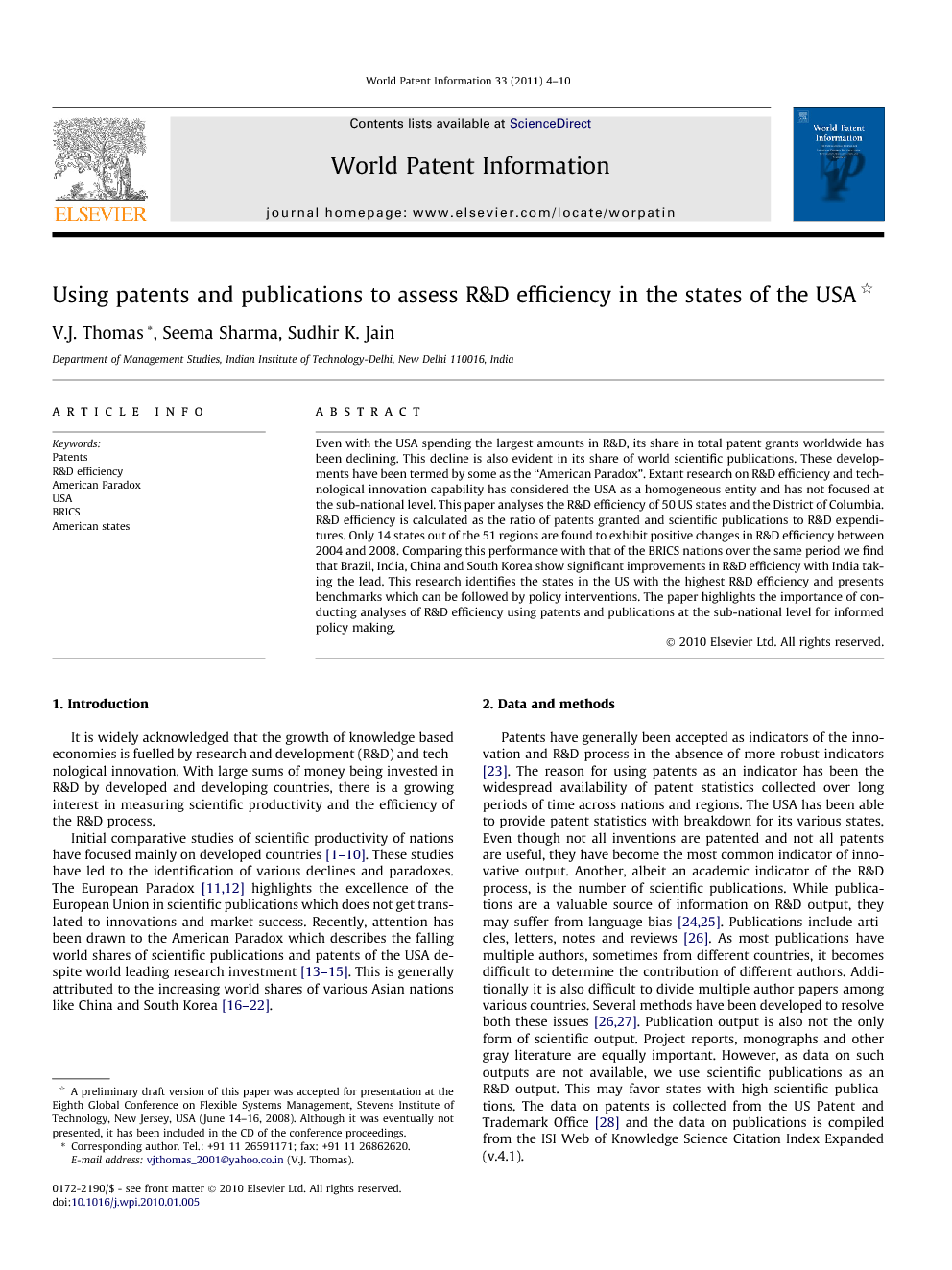ترجمه فارسی عنوان مقاله
استفاده از اختراعات ثبت شده و نشریات برای ارزیابی بهره وری "تحقیق و توسعه" ایالات متحده آمریکا
عنوان انگلیسی
Using patents and publications to assess R&D efficiency in the states of the USA
| کد مقاله | سال انتشار | تعداد صفحات مقاله انگلیسی |
|---|---|---|
| 4237 | 2011 | 7 صفحه PDF |
منبع

Publisher : Elsevier - Science Direct (الزویر - ساینس دایرکت)
Journal : World Patent Information, Volume 33, Issue 1, March 2011, Pages 4–10
ترجمه کلمات کلیدی
- & - اختراعات - بهره وری تحقیق و توسعه - پارادوکس آمریکایی - ایالات متحده آمریکا - برزیل - روسیه - هند - چین - کره جنوبی - ایالت های آمریکا -
کلمات کلیدی انگلیسی
Patents,R&D efficiency, American Paradox,USA,BRICS,American states,

